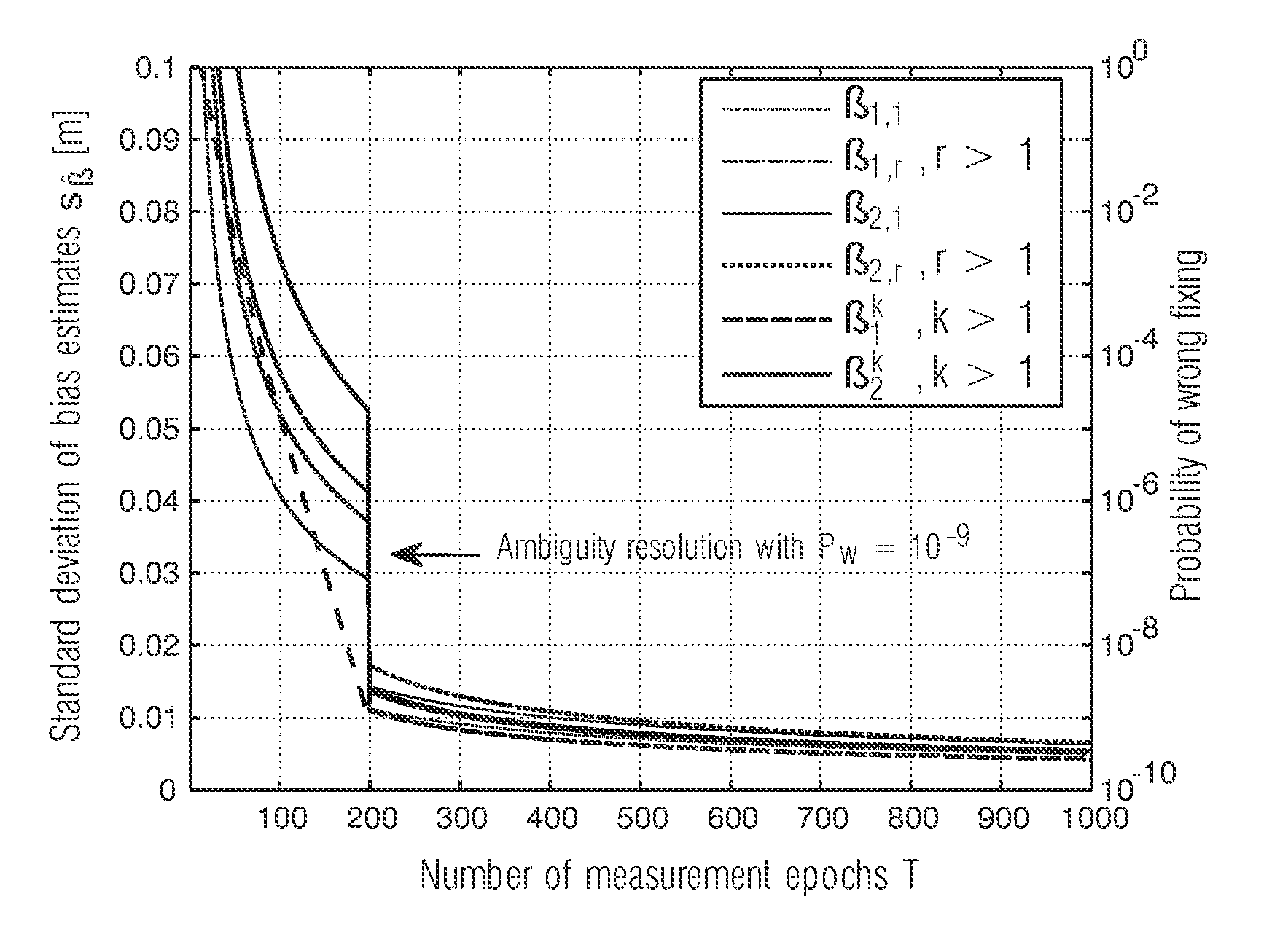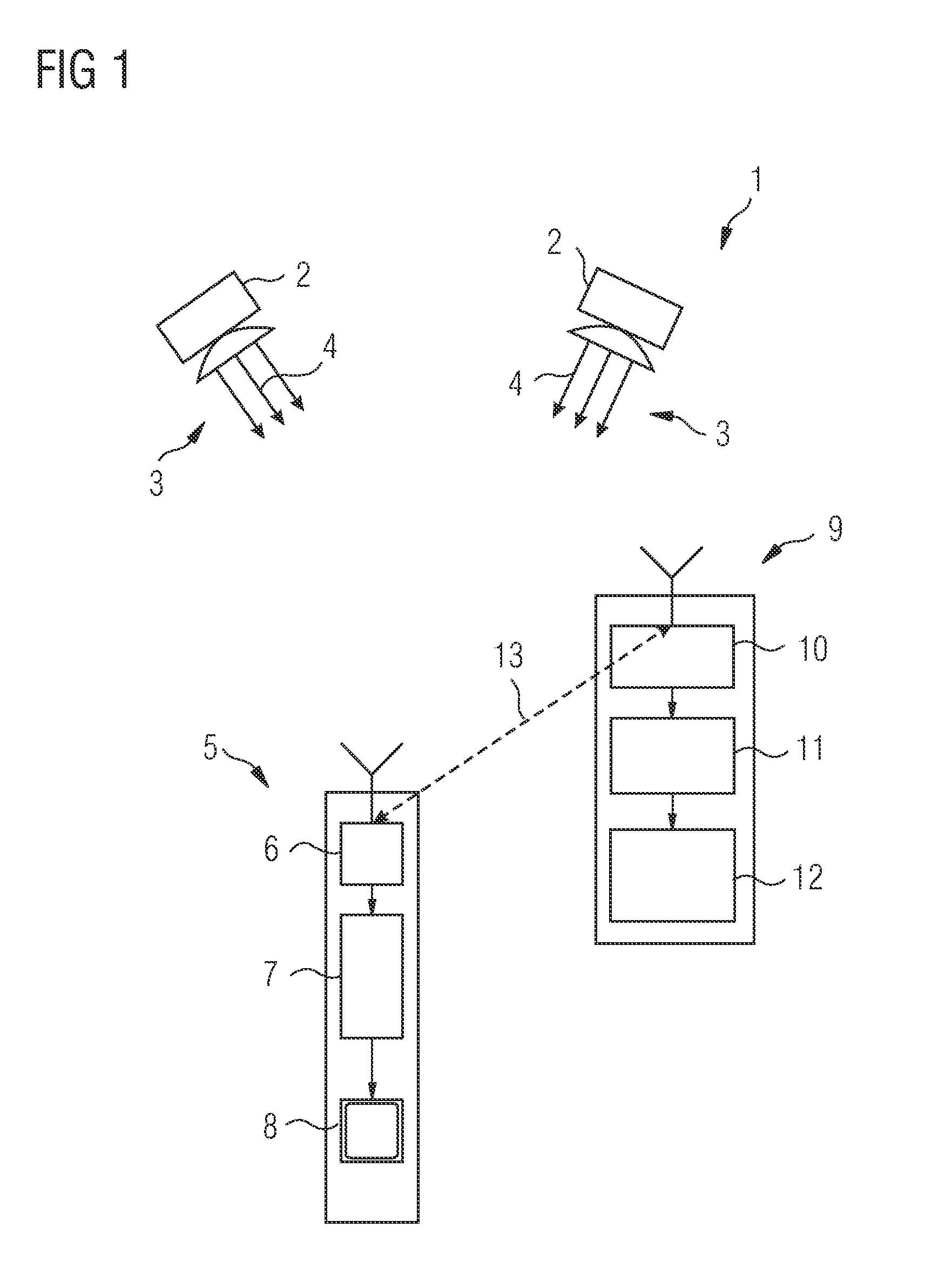Method for determining biases of satellite signals
a satellite signal and bias technology, applied in the field of satellite signal bias detection, can solve problems such as information loss, and achieve the effect of improving accuracy
- Summary
- Abstract
- Description
- Claims
- Application Information
AI Technical Summary
Benefits of technology
Problems solved by technology
Method used
Image
Examples
Embodiment Construction
[0043]FIG. 1 shows a global navigation satellite system 1 which comprises satellites 2 orbiting around the earth and emitting navigation signals 3 modulated on a number of carrier signals 4.
[0044]A user system or navigation device 5 comprises a receiver 6 which is connected to a signal processor 7. The signal processor 7 processes the navigation signal 3 received from the satellites 2 and displays the results on a display 8 of the navigation device 5.
[0045]A stationary reference station 9 equally comprises a receiver 10 connected to a signal processor 11 and a transmission unit 12, which transmitts system informations to the navigations devices 5. In particular the satellite biases and information on the ionospheric delay are transmitted to the navigations devices 5.
[0046]For determining the position of the navigation device 5 various methods can be used. Generally code measurements of code signals transmitted by the carrier signals and phase measurement of the actual phase of the c...
PUM
 Login to View More
Login to View More Abstract
Description
Claims
Application Information
 Login to View More
Login to View More - R&D
- Intellectual Property
- Life Sciences
- Materials
- Tech Scout
- Unparalleled Data Quality
- Higher Quality Content
- 60% Fewer Hallucinations
Browse by: Latest US Patents, China's latest patents, Technical Efficacy Thesaurus, Application Domain, Technology Topic, Popular Technical Reports.
© 2025 PatSnap. All rights reserved.Legal|Privacy policy|Modern Slavery Act Transparency Statement|Sitemap|About US| Contact US: help@patsnap.com



